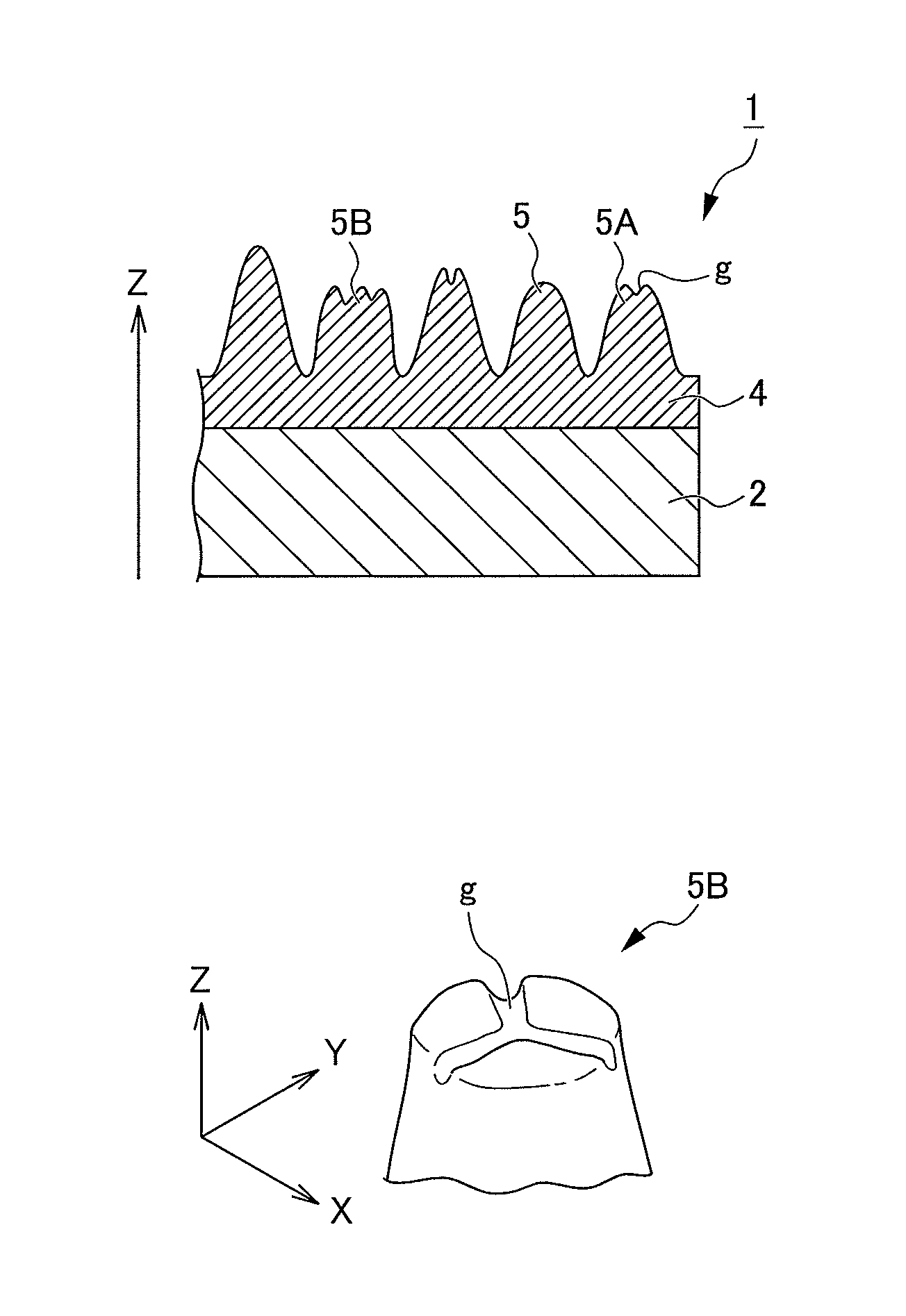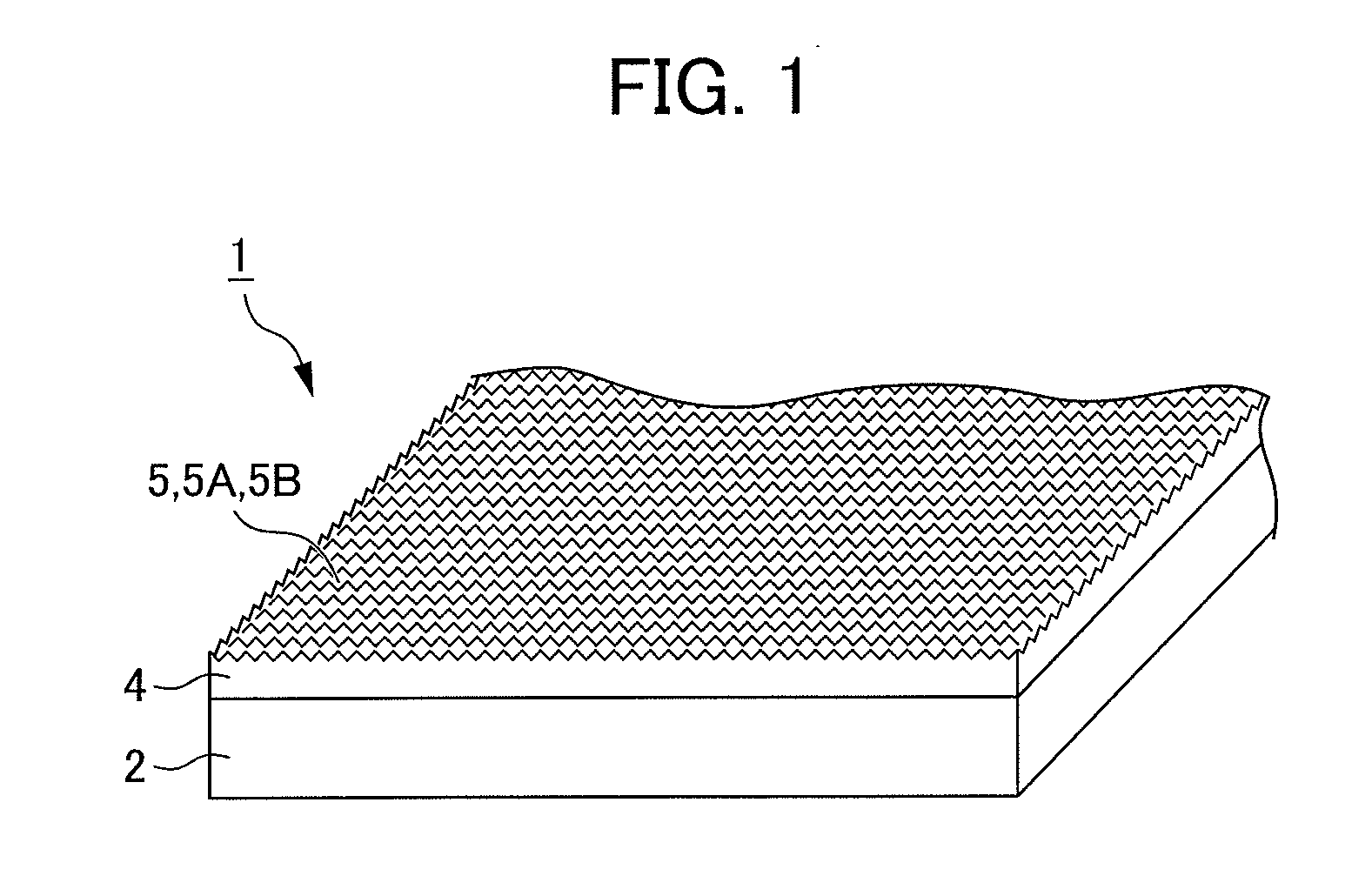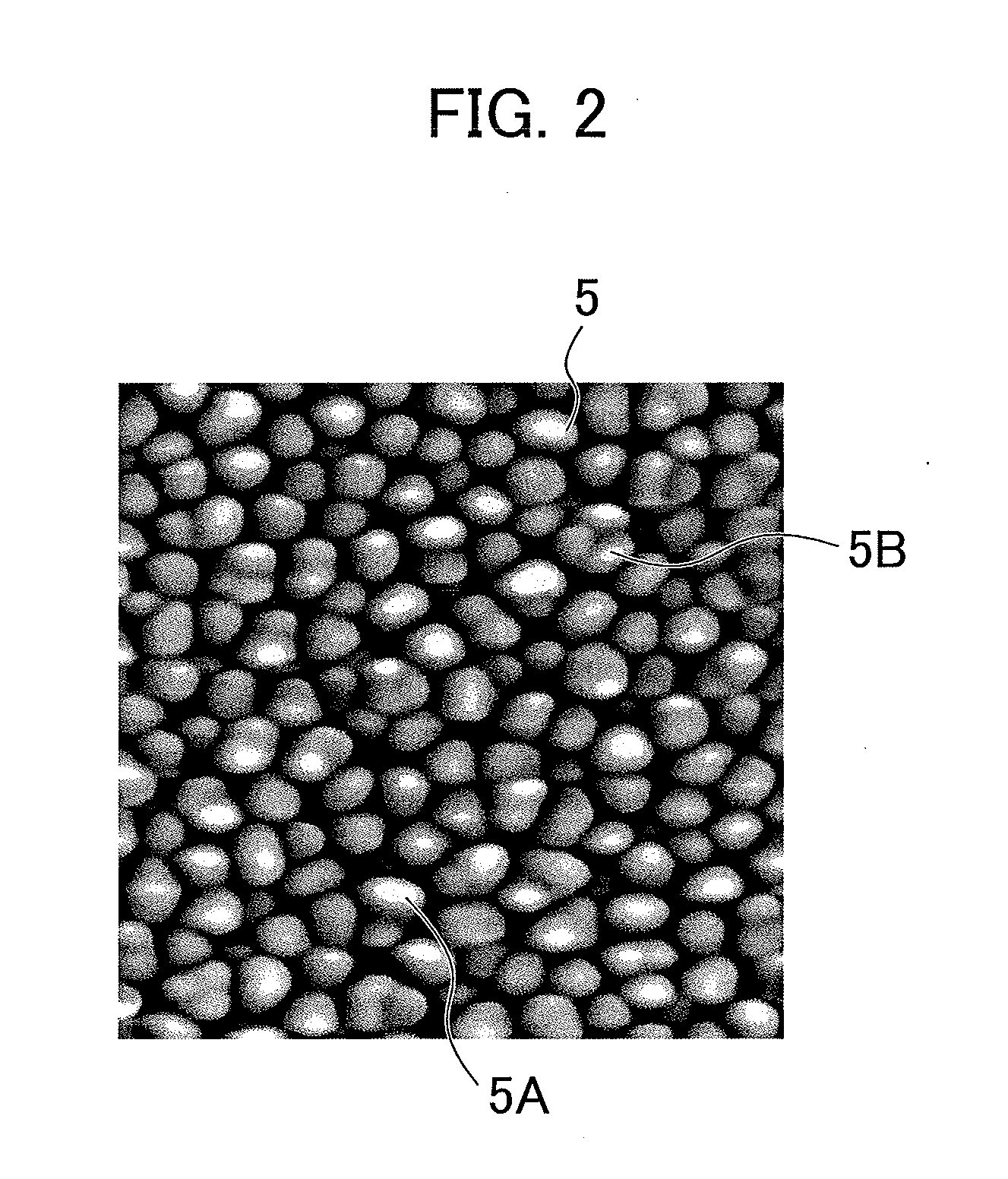Antireflective article, image display device, production mold for antireflective article and production method for antireflective article production mold
- Summary
- Abstract
- Description
- Claims
- Application Information
AI Technical Summary
Benefits of technology
Problems solved by technology
Method used
Image
Examples
first embodiment
[0115]FIG. 1 is a diagram (schematic perspective view) illustrating an antireflective article according to a first embodiment of the present invention. The antireflective article 1 is an antireflective film that is generally formed in a film shape. In an image display device according to the present embodiment, the antireflective article 1 is held by being attached to a front surface of an image display panel, and reflections of external light such as sunlight or lamp light from the screen are suppressed by the antireflective article 1 to improve visibility. The shape of the antireflective article is not limited to a flat film shape, but the antireflective article may be formed in a flat sheet shape or a flat plate shape (the shapes are referred to as film, sheet, and plate shapes in ascending order of the relative thicknesses). Moreover, the film shape, the sheet shape, and the plate shape may have a curved shape or a stereoscopic shape instead of the flat shape. Furthermore, antir...
second embodiment
[0191]In the present embodiment, the height distribution of fine protrusions is controlled. That is, in an antireflective article, it is possible to control characteristics in a viewing direction in which the anti-reflection function is to be achieved by controlling the height distribution of fine protrusions. Thus, in the present embodiment, in the step of forming a molding mold by alternately repeating anodization and etching, the application voltage during the repeated anodization is varied. Here, when micro-pores are created by anodization, the application voltage during anodization is proportional to the micro-pore pitch. Due to this, when the application voltage during the anodization in the repeated anodization and etching is varied, it is possible to form micro-pores of which the boring periods in the depth direction are different and to control the proportion thereof. In this way, it is possible to control the height distribution of fine protrusions.
[0192]Moreover, when the...
third embodiment
[0208]FIG. 18 is a diagram illustrating a frequency distribution of height h of fine protrusions in an antireflective article according to a third embodiment of the present invention. The present embodiment has the same configuration as the above-described embodiment except for the configuration related to the height distribution.
[0209]Here, a molding mold of the present embodiment is produced in the following manner. That is, in the first to fifth steps (FIG. 16), the voltage is increased gradually in the second step to execute the treatment of the third step, anodization is executed using a higher voltage in the fourth step, and the fifth step is executed twice. In an antireflective article produced in this manner, as illustrated in FIG. 18, the height distribution of fine protrusions has a discrete (double-peak) distribution, and a distribution of multi-peak fine protrusions is formed so as to correspond to each crest of the distribution.
[0210]In the antireflective article of the...
PUM
| Property | Measurement | Unit |
|---|---|---|
| Nanoscale particle size | aaaaa | aaaaa |
| Nanoscale particle size | aaaaa | aaaaa |
| Length | aaaaa | aaaaa |
Abstract
Description
Claims
Application Information
 Login to View More
Login to View More - R&D
- Intellectual Property
- Life Sciences
- Materials
- Tech Scout
- Unparalleled Data Quality
- Higher Quality Content
- 60% Fewer Hallucinations
Browse by: Latest US Patents, China's latest patents, Technical Efficacy Thesaurus, Application Domain, Technology Topic, Popular Technical Reports.
© 2025 PatSnap. All rights reserved.Legal|Privacy policy|Modern Slavery Act Transparency Statement|Sitemap|About US| Contact US: help@patsnap.com



